If you’re looking to add a touch of beauty and elegance to your outdoor landscape, silver plants are often one of the most popular choices.
Not only are they a unique, eye-catching addition to any outdoor space, silver plants can also serve to brighten the shady areas of garden beds and borders where dark greens tend to become lost.
In this guide, we’ll take a closer look at 15 of the best silver-colored blooms you can populate your garden with. We’ll also answer a few of the frequently asked questions related to silver plants.
1. Silver King Artemisia
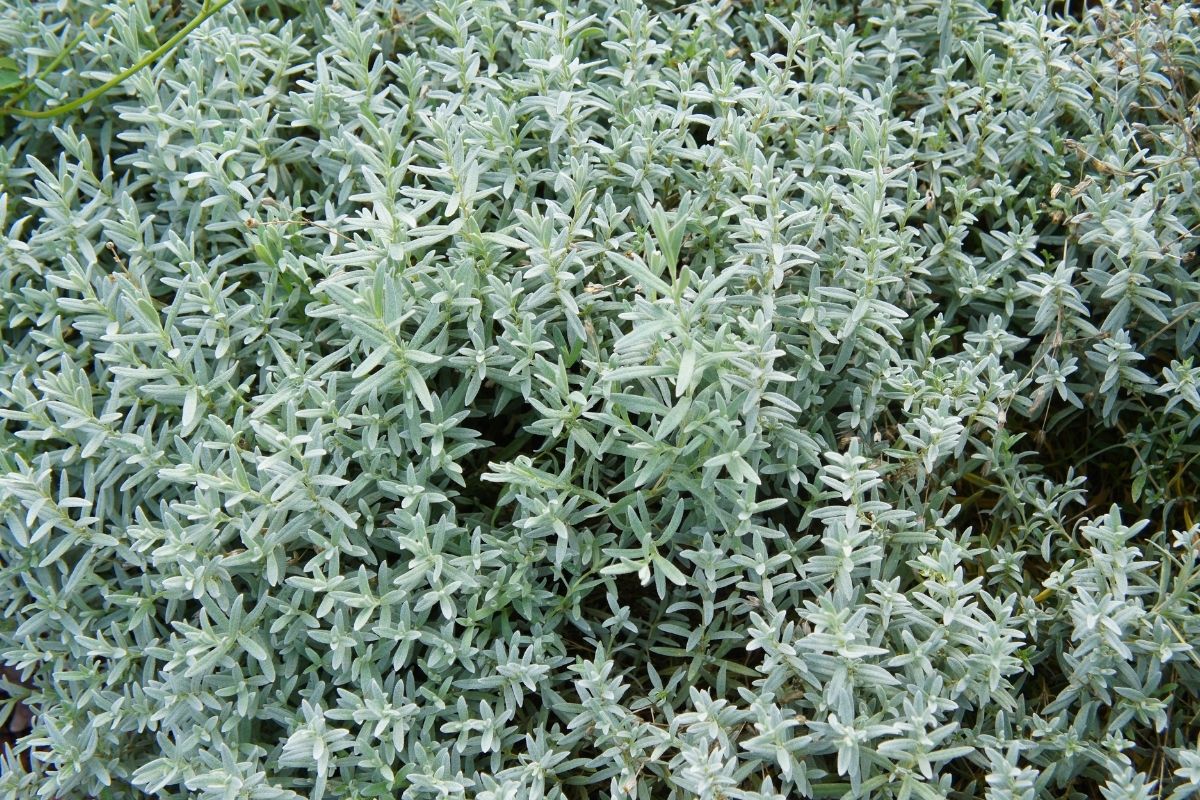
The first silver plant on our list is the ‘silver king’ artemisia. This popular plant can grow up to three feet high and looks great paired with just about anything.
Artemisia is a perennial which flourishes best in full sunlight, while it’s also a rapid spreader – so maybe not the best if you’re concerned with harboring aggressive plants. Some varieties of artemisia such as silver mound feature fine-textured foliage which can also add a touch of elegance to your garden.
2. Dusty Miller
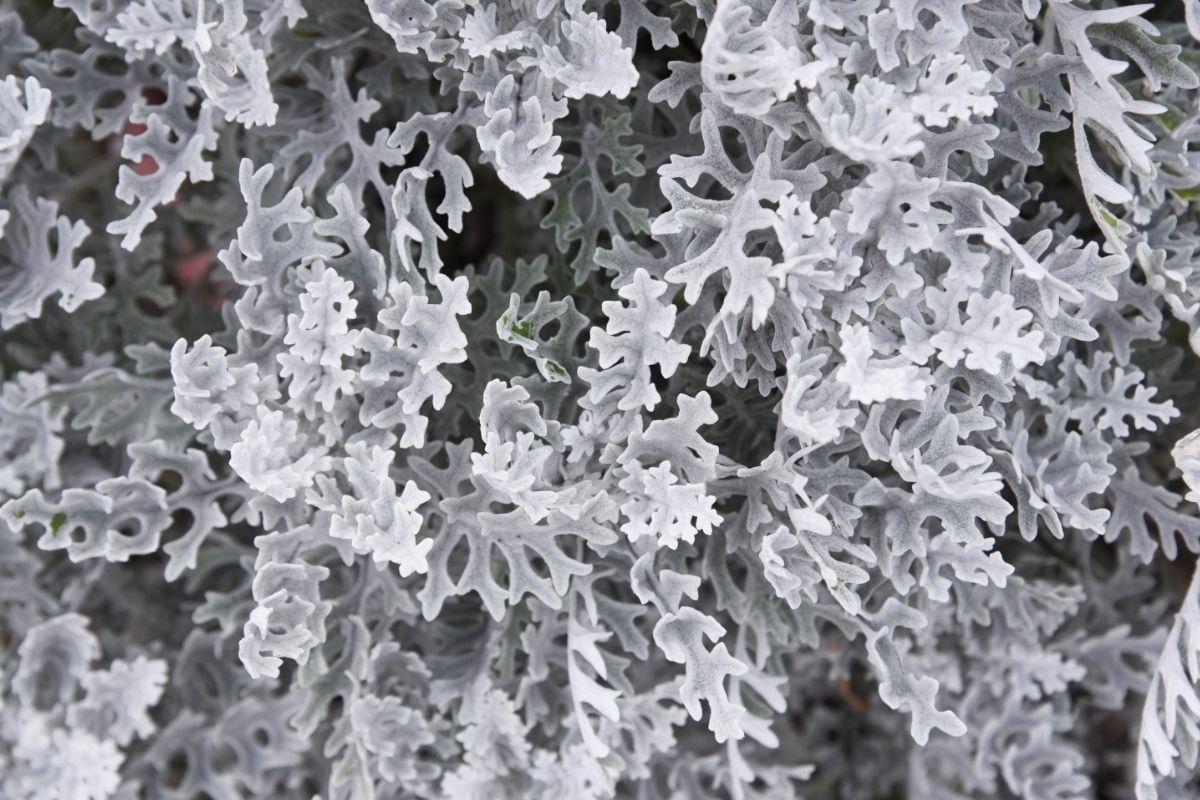
Dusty miller is a plant best-known for its textural foliage which is typically covered in soft silver hairs. This plant is an incredibly versatile annual that looks great when paired with blue, pink and white colors.
Dusty miller is at its best when added to summer container gardens which can guarantee long periods of dry weather. It’s worth noting that dusty miller is particularly great for growing with other heat-loving plants such as scaevola and angelonia.
3. Dianthus
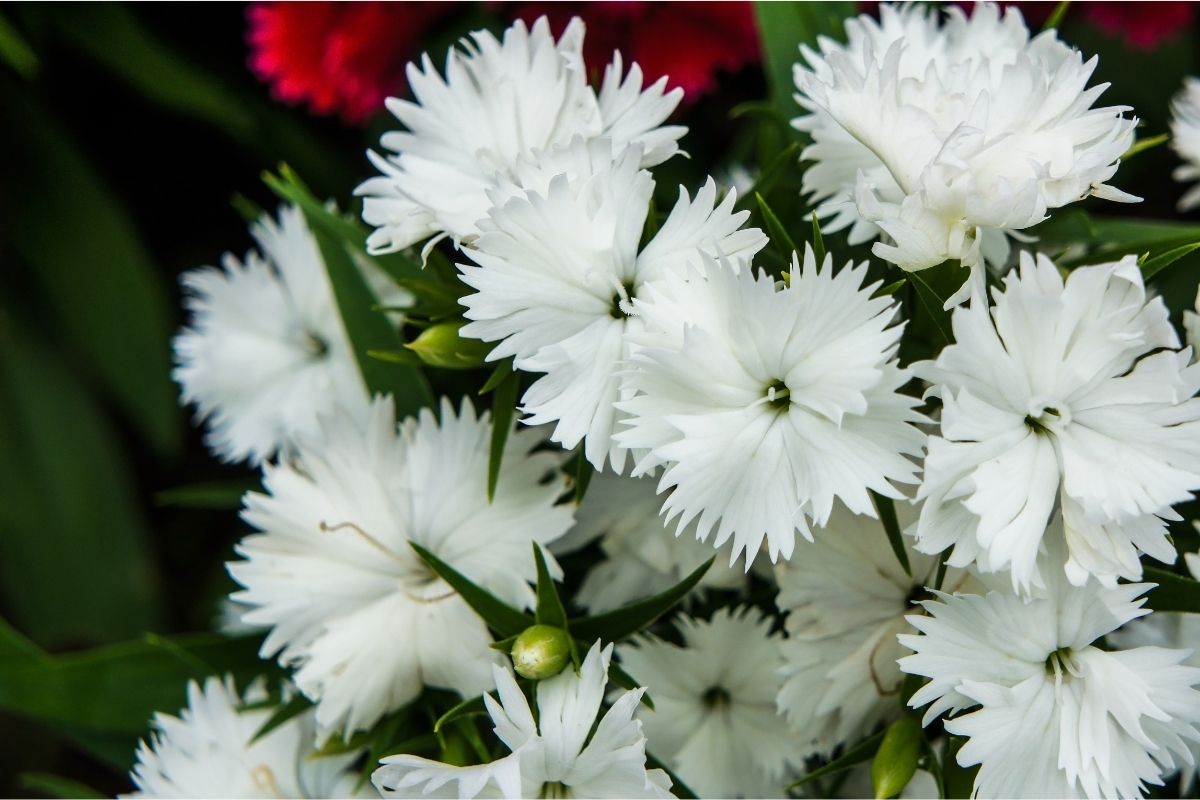
The next plant on our list is the dianthus. This herbaceous perennial typically produces showy, fragrant flowers and beautiful silvery leaves. While most people love the dianthus because of its colorful blooms, the silver-colored foliage is what keeps the plant looking great after the flowers fade.
Dianthus is best-suited for the front of borders due to the fact that it’s low and mounding. Be sure to plant it in sunny pathways where you can enjoy both its beautiful appearance and scent when in bloom.
4. Blue Fescue
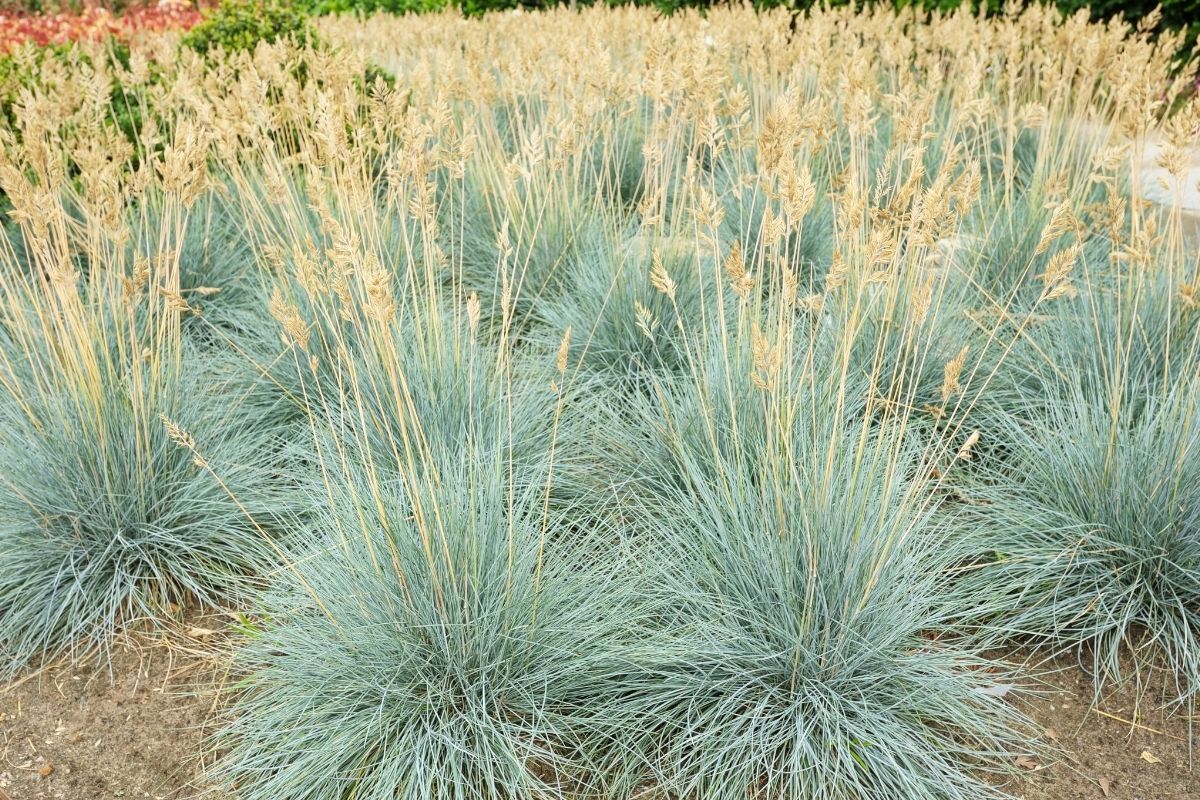
If you’re looking for an ornamental grass to add to your garden, blue fescue is one of the best options. The silvery-blue foliage is fantastic to look at, and appears to recede when viewing the plant from a distance. This is great for making your outdoor space feel larger than it is.
Blue fescue is a perennial which stays in tidy mounds, making it an excellent addition to any garden when looking to create a fun, geometric look. For optimal levels of growth, make sure you plant blue fescue in sunny spots in zones four to eight.
5. Japanese Painted Fern
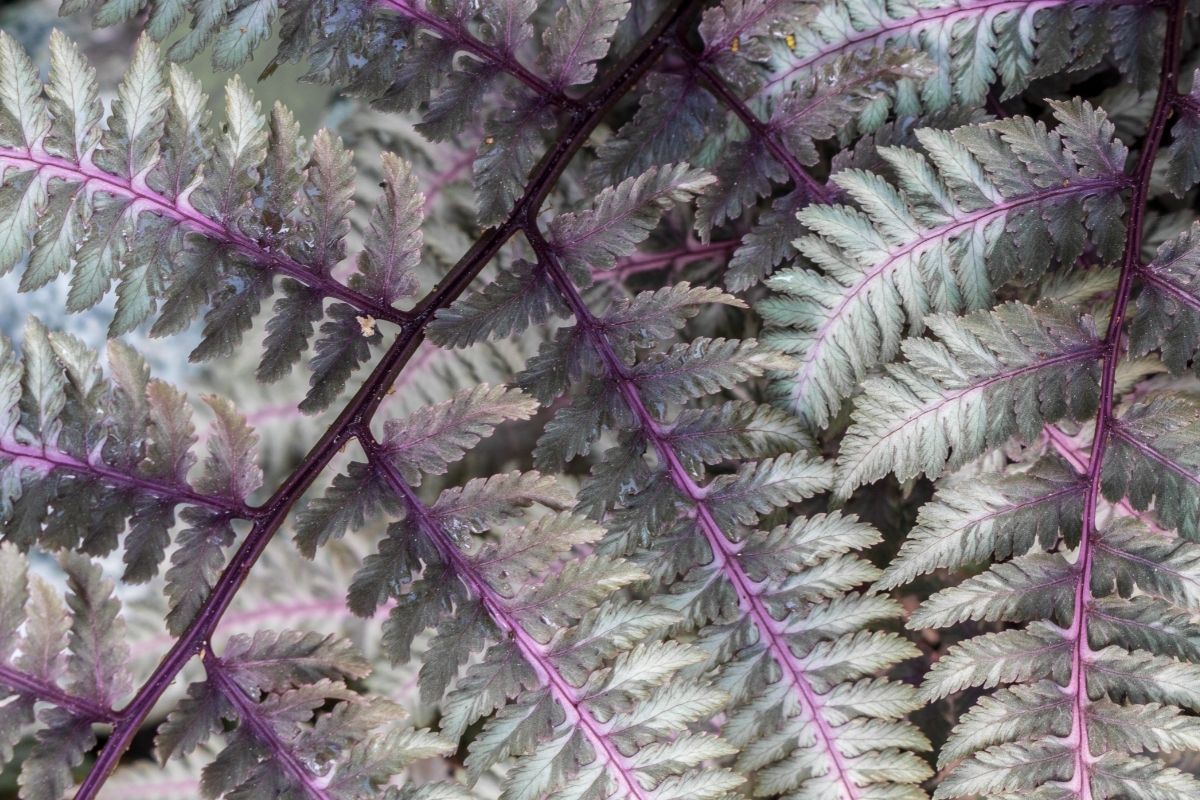
Japanese painted fern is perfect for adding some lightness to a shaded landscape. This silvery plant is most effective under areas that don’t receive a great deal of sun, and is often used in gardens as a focal point amid deeper shades of purple and green.
Japanese painted fern is a relatively slow-growing plant that only grows to roughly 12 inches in height. It’s best employed either in the front of a border or as an edging plant, and makes a particularly good partner for hydrangea, ajuga, and hosta.
6. Russian Sage
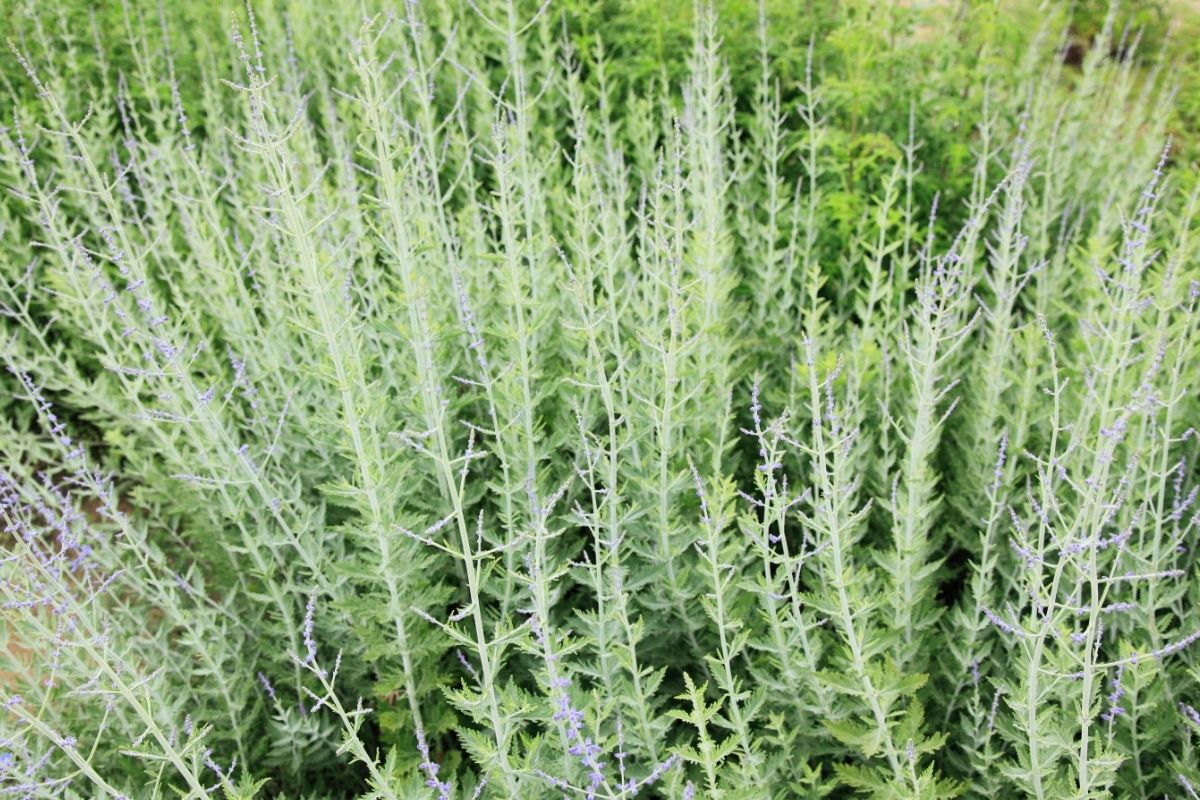
The popular perennial is an excellent option if you’re looking to inject some silver color into your landscape. It’s the stems of russian sage which provide the strongest silver color, while the small, delicate flowers and gray-green leaves all combine together to give the plant a unique, airy appearance.
Russian sage can grow up to four feet high, although it often has a tendency to sprawl. This perennial is best planted in hardiness zones four to nine, just make sure zone four has some winter protection.
7. Dichondra ‘Silver Falls’

This elegant plant can add a real sense of beauty to your garden due to the fact that the silver leaves of the dichondra ‘silver falls’ appear as if they’re glowing at dusk and dawn. This is what makes the plant such a great addition to the outdoor spaces you spend time in as the sun goes down.
While dichondra ‘silver falls’ typically excel in container gardens, the low-maintenance nature of the plant makes it just as effective as an annual ground cover in borders and sunny beds.
8. Lavender
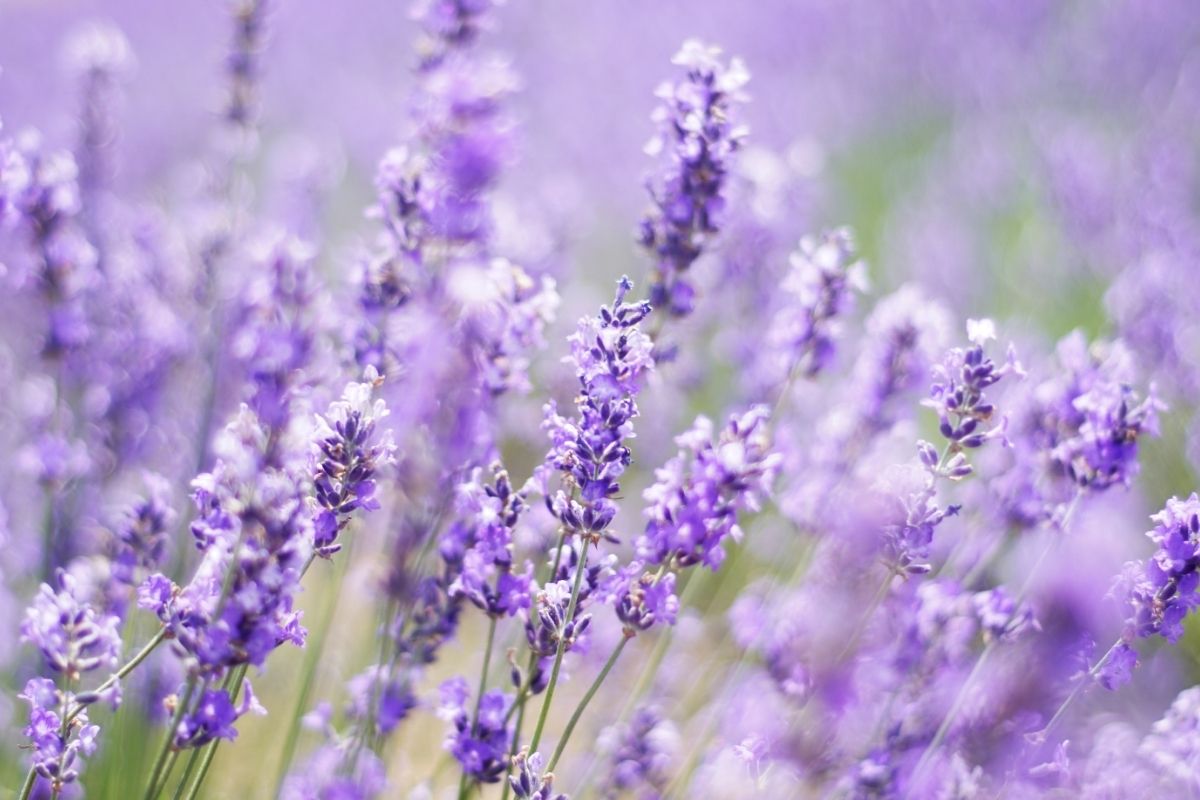
Lavender is an incredibly popular and versatile plant which should be used in every garden. Most forms of lavender feature silver-green foliage, while some varieties such as “anouk silver” provide extra silvery leaves.
Not only do the indigo blooms and silver foliage of lavender look great on the eye, the plant also offers a superb fragrance, as well as impressive heat and drought tolerance.
As is the case with most silvery-leafed plants, lavender grows best in well-drained soil, and can grow up to three feet in height. If you wish to attract bees and butterflies to your outdoor space, lavender is essential as pollinators adore the fragrant blooms.
9. Snow-In-Summer

The next silver plant on our list is the snow-in-summer, also known as “cerastium tomentosum”. This plant is an eye-catching addition to any outdoor space, with stunning silver foliage and incredibly elegant snow-white blooms.
Snow-in-summer grows most effectively in hardiness zones three to seven, with the best blooming period usually around June. The plant never grows higher than one foot high, making it the perfect ground cover in sunny areas and rock gardens.
10. Sedum
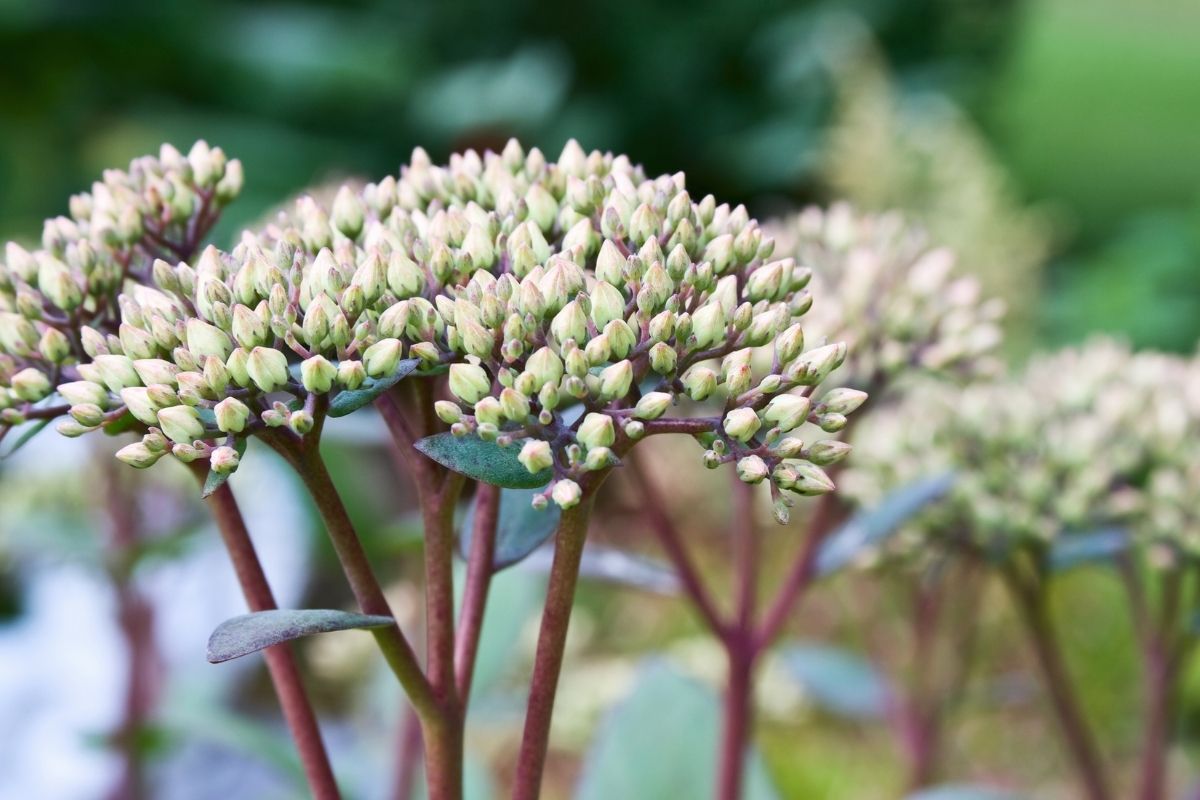
There are several sedum varieties you can choose from, with many featuring silvery-green foliage. Sedum can be used effectively in borders, beds, and rock gardens, with people often combining different varieties of the plant to create stunning textural contrasts.
Upright sedums make the perfect addition to late-summer and fall gardens. They’re also useful in terms of providing an important food source for migrating pollinators.
11. Lamb’s Ears
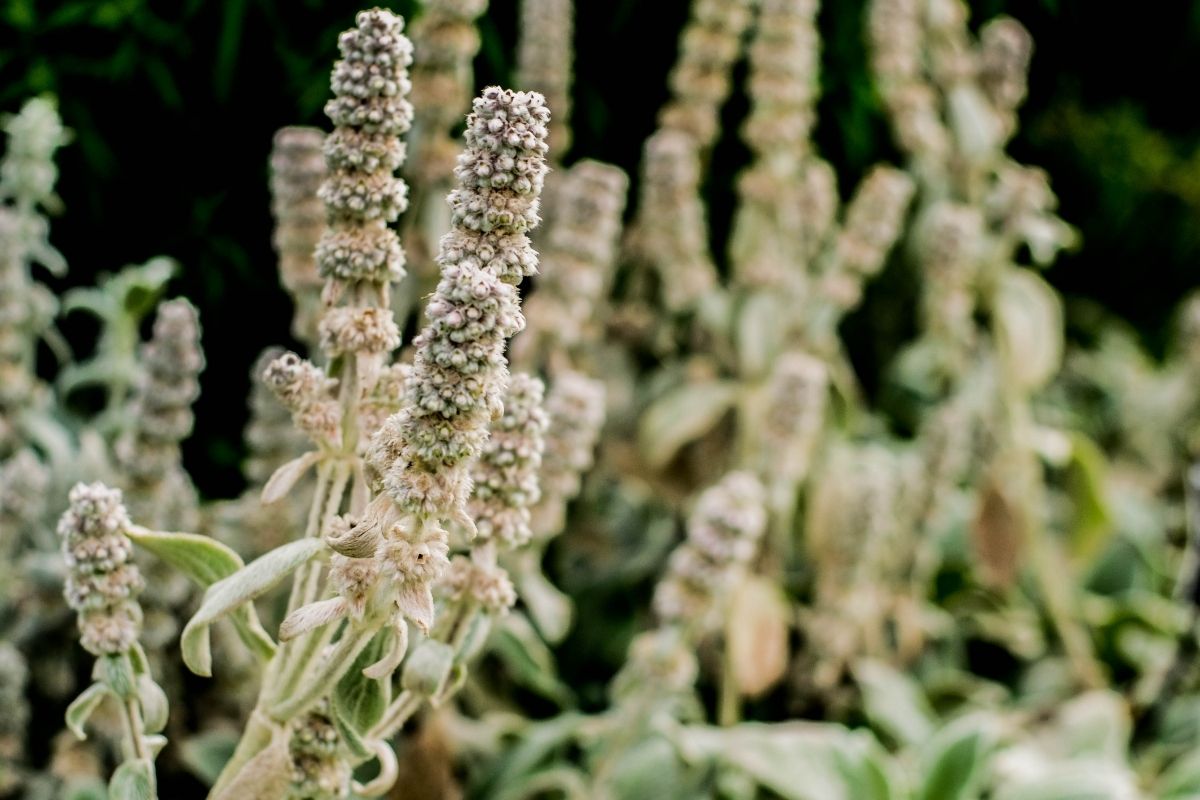
The silvery color of lamb’s ears comes from the covering of soft hairs on the plant’s oval-shaped leaves. These large leaves also help to reflect light off the foliage, keeping the plant cool in warmer temperatures.
Lamb’s ears is a perennial which can grow up to 18 inches high and typically produces tall flower spikes with purple blossoms during early summer. For optimal growth, make sure you plant it in hardiness zones four to eight and in full sunlight.
It’s worth keeping in mind that this plant can spread quite a lot. So, while this might be a good thing if you’re looking for ground cover, it’s not ideal if you’re trying to avoid invasive plants in your garden.
12. Mullein
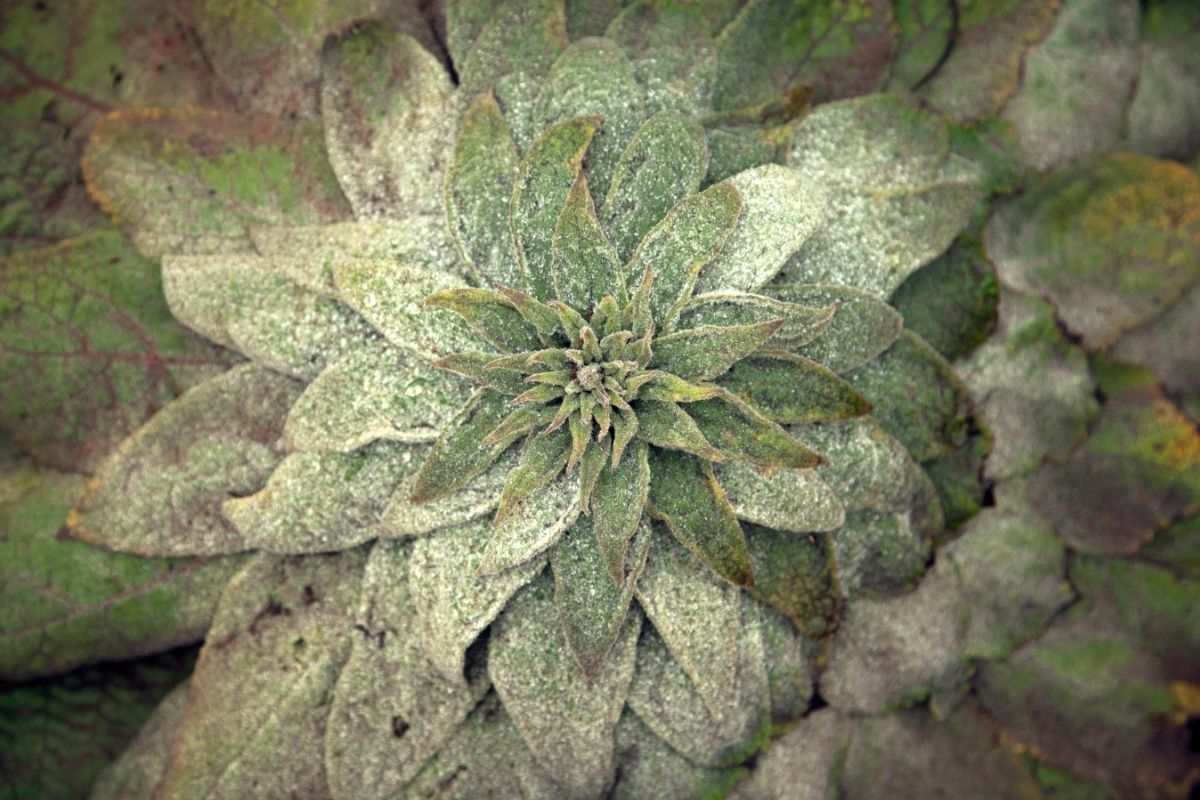
Best known for its tall, yellow-spiked flowers, common mullein also features gorgeous silvery leaves. The plant is often seen growing wild along roadsides and in poor-quality soils where other plants tend to struggle.
While the yellow blooms of mullein aren’t necessarily the most vibrant or showy, they usually appear from June through to September, and can reach heights of seven feet. Mullein is a perennial in hardiness zones three to nine.
13. Wooly Thyme
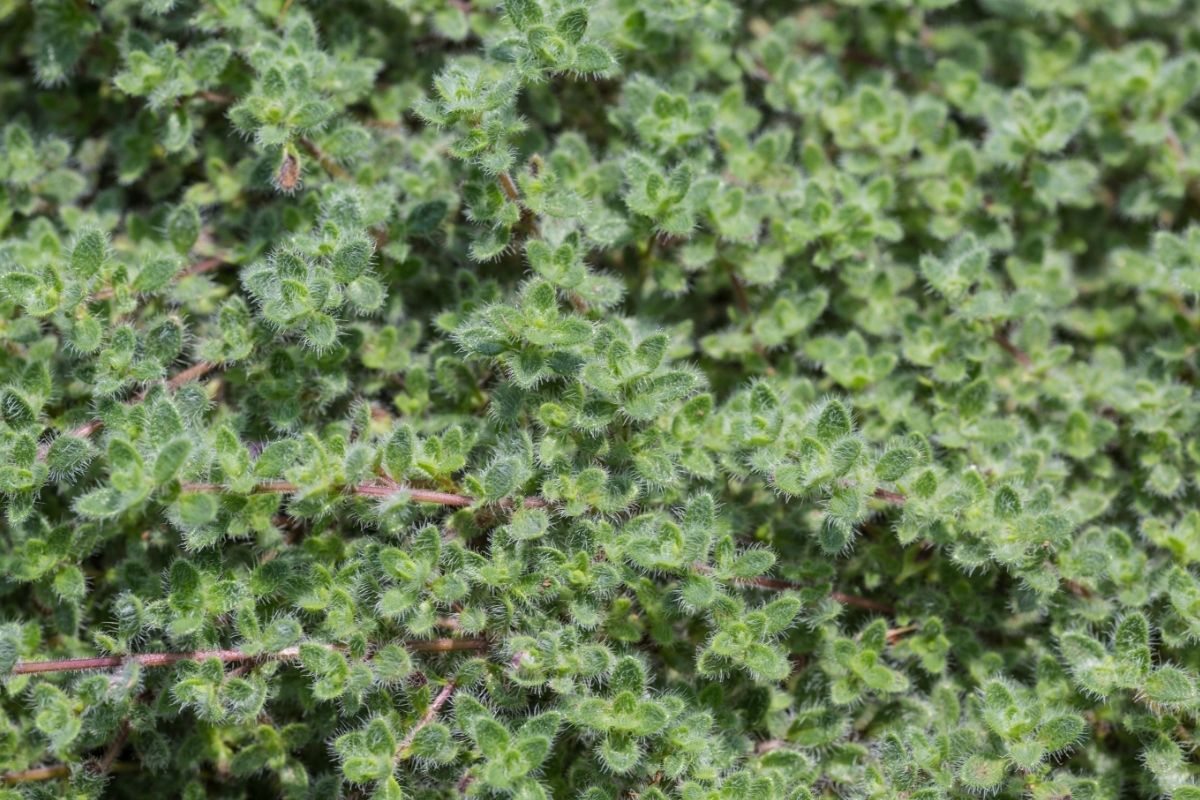
Wooly thyme is so named because of the distinctive, wool-like feeling of its leaves. Despite the fact that the leaves are usually a shade of gray-green, the silver hairs on the foliage provide the plant with a silvery, fuzzy appearance.
Wooly thyme only tends to grow to about three inches high, so it’s best used as a ground cover plant. If you want the perennial to produce its pale pink flowers during the blooming season (June and July), make sure you plant it in hardiness zones five to eight.
14. Echeveria
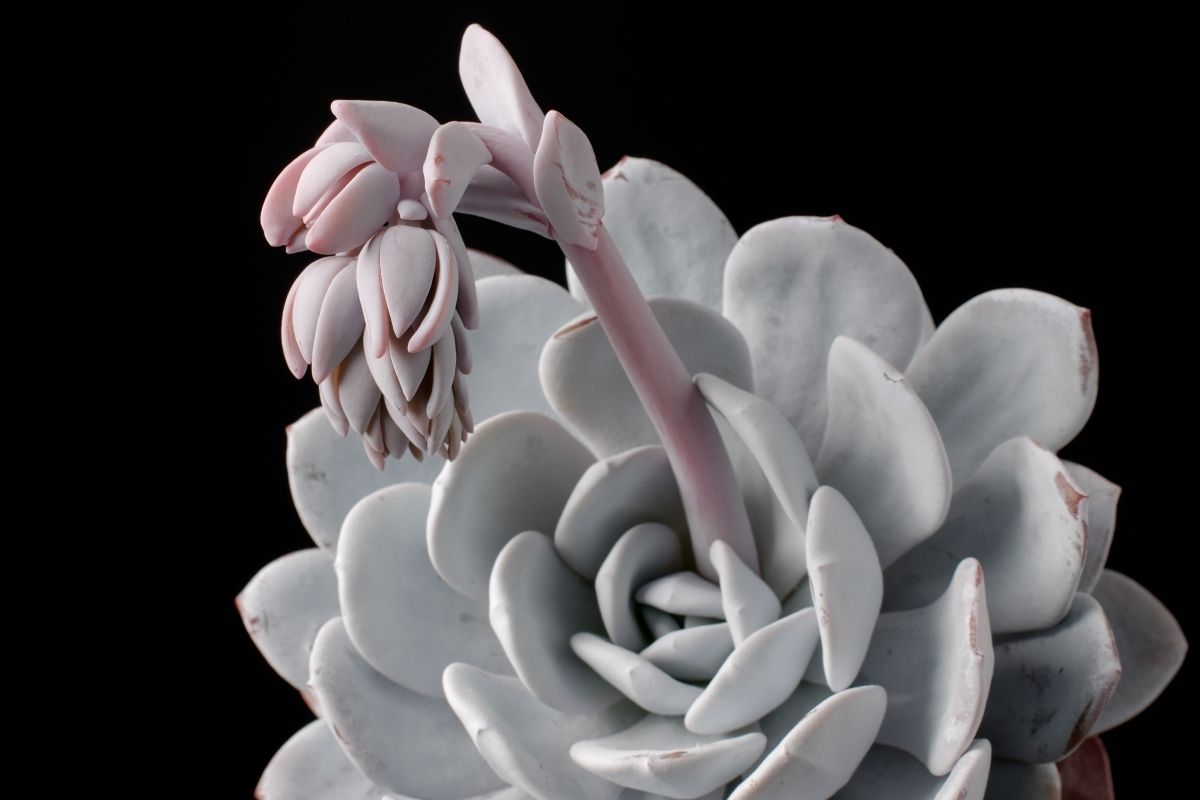
Echeveria is a type of succulent plant that’s adored for its low water needs. Many varieties of this plant feature beautiful silver foliage, which is often indicative of drought resistance.
The best place for echeveria is in container gardens, either with other succulents or by itself. This plant is incredibly easy to care for, and if your containers are located in a spot which receives some rainfall, you might not even need to water echeveria.
RELATED: A Silver Lining: 19 Different Types Of Silver Trees
15. Siberian Bugloss
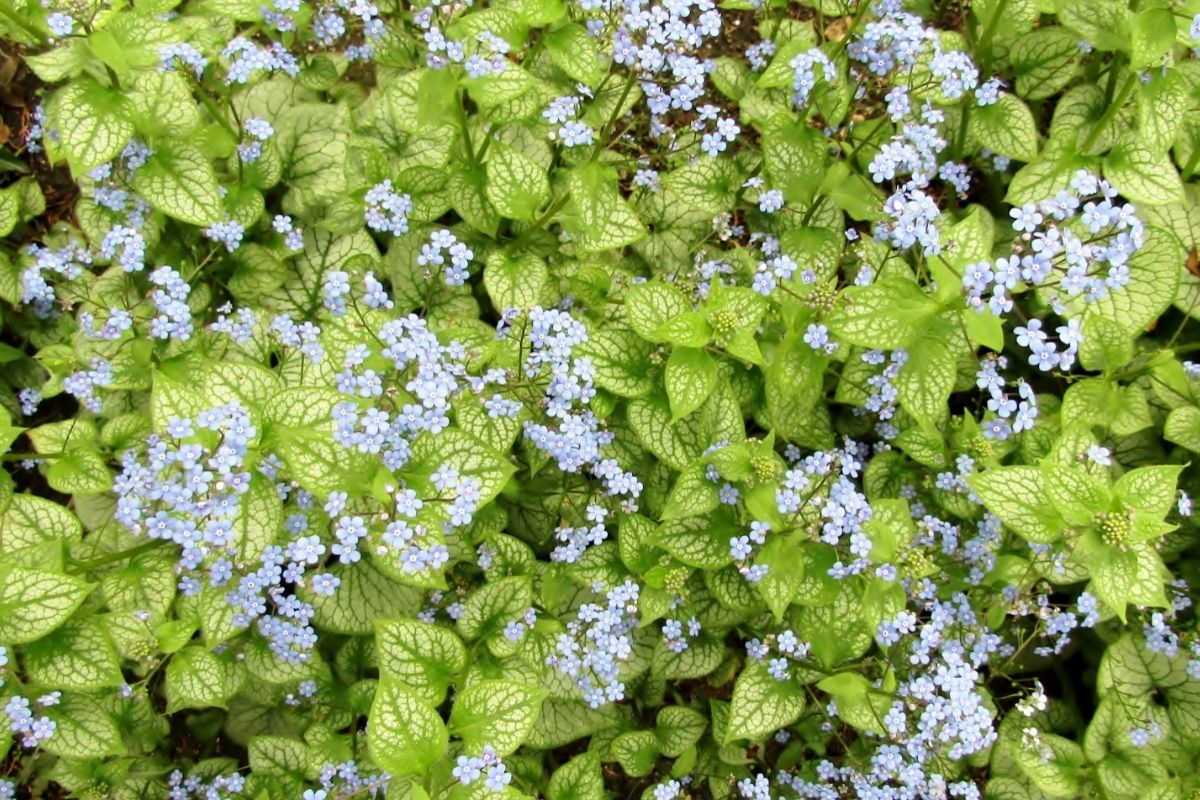
The final silver plant on our list, and by certainly no means the least, is the Siberian bugloss. This perennial is also sometimes referred to as “Jack Frost Brunnera”, because of the frosty appearance of its silver leaves.
Siberian bugloss typically produces pretty blue flowers that bloom during the spring months, while the green and silver leaves of the plant look equally impressive throughout the entire growing season. This plant can grow up to 18 inches in height, and is best planted as a ground cover in partial shade.
Frequently Asked Questions
Does Dusty Miller Grow Back Every Year?
Dusty miller is grown as an annual, meaning it’s often discarded after the first season. However, it can also be grown as a herbaceous perennial in hardiness zones eight to 10. If you want your dusty miller plant to self-seed, make sure you leave a few flowers to bloom in late summer.
Which Plants Look Good With Artemisia?
The best companions for artemisia are other drought-tolerant plants. Some of these include russian sage, salvia, lavender, ornamental allium, red hot poker, coneflower, and ornamental grasses.
How Do Hardiness Zones Work?
The United States Department of Agriculture (USDA) creates and updates the plant hardiness map every few years. This map divides North America into 11 different zones sorted by minimum average annual temperatures.
The lower the number of the zone, the lower the temperature is. For example, temperatures in zone three are considerably lower than temperatures in zone seven. It’s also worth noting that each zone is separated by a temperature difference of 10 degrees.
The Bottom Line
To conclude, there are a wide variety of silver plants you can use to add the perfect touch of color and elegance to your garden. From dianthus and ‘silver king’ artemisia to russian sage and lavender, the options are endless.
So, be sure to do your research, and you’ll have no trouble finding the perfect plant to populate your garden with!
Editor’s Recommendations
15 Awesome Melon Plants (With Pictures)







